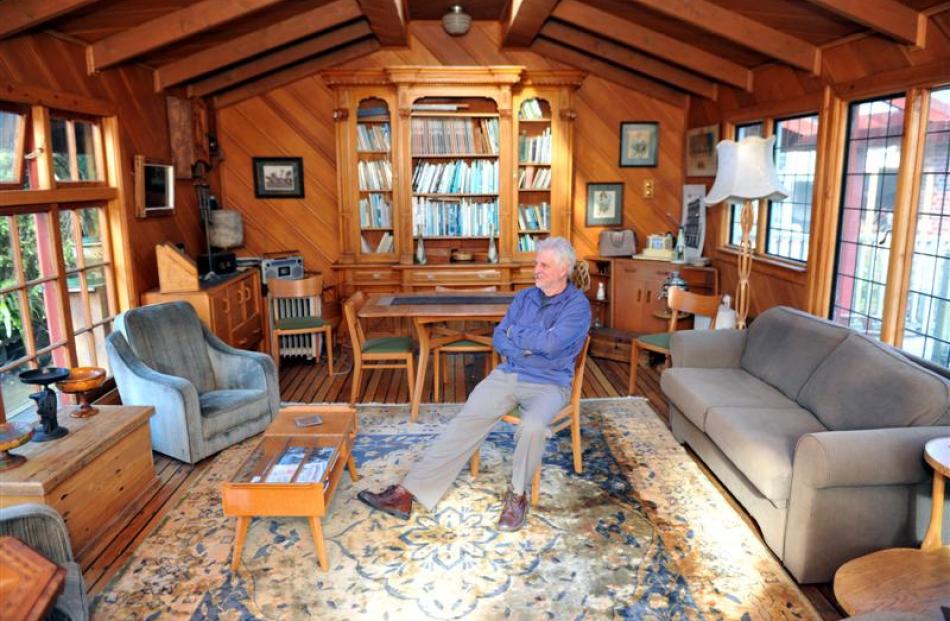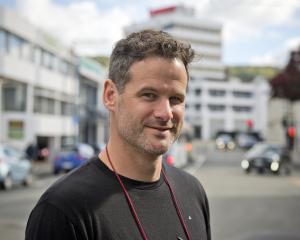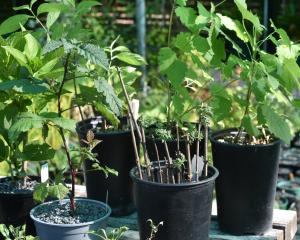As the gavel falls on his 12-year career in the auction business, Kevin Hayward gives Kim Dungey a tour of his own favourite pieces and offers practical advice for would-be collectors.
A big bookcase sits in Kevin Hayward's house and every time he passes it, it makes him smile.
The late 19th century piece came from Redcastle, the residence for teaching brothers at St Kevin's College in Oamaru, and illustrates his philosophy on collecting: buy what you like and want in your home rather than what you think will make you money.
Hayward recalls the rimu bookcase catching his eye when it came up for sale at Plumbly's auction house and wondering after he had bought it, ''where the hell'' he would put it?
''It has an ecclesiastical look about it and I suspect it's a one-off piece but I don't know. I quite like wood and appreciate the amount of work that went into it.''
The 66-year-old, who retires at the end of next month, has never been driven to have a ''comprehensive set of things'' and does not consider himself a collector.
But he and partner Jude Ferguson have filled their 1930s Dunedin home, surrounded by 2ha of bush, with everything from colonial landscape paintings and hand-coloured scenic photos to pokerwork, sovereignware and New Zealand pottery.
When Ferguson bought the two-bedroom bungalow in the late 1980s, it was still in its original condition.
With help from Hayward's son, Tom, they later built a new kitchen, altered the dining area so it opened on to a large deck, extended the bathroom and added timber panelling to interior walls.
In some cases, the renovations simply evolved as they accumulated doors and other building materials, Hayward says.
A leadlight ''PANTRY'' sign in the kitchen came from a cake shop at Port Chalmers.
Four stained-glass panels in the bathroom reportedly came out of Dunedin's oldest home, Ferntree Lodge, and a blue and white toilet, made by George Jennings in London, was in 30 pieces when bought at auction and had to be glued together.
Hayward made the mantelpiece in the lounge with timber from the Hillside railway workshops and cut down old doors from a Dunedin tram to provide access to outside.
The deck leads to a wood-lined room above the garage where light spills in clerestory-style windows down the centre of the roof, bathing the interior in a golden glow.
''From the street, it looks like a cable car, a bit Mickey Mouse,'' he says in his self-deprecating manner.
''Again, it was only because I'd bought the windows and couldn't think how to use them.''
The room's timber flooring, originally from the DIC building, caused headaches for Hayward, who used to have a business restoring and reproducing colonial furniture.
Much of the tongue and groove had been smashed off when it was taken up and he soon realised it would take a ''huge'' amount of caulking to close up the wide gaps left between the boards.
After trying various compounds, he eventually used binder twine as a filler and a black sealant on top.
The result looks a little like the deck of a ship. Traditionally, fibrous material was driven into the seams of wooden vessels to make them watertight.
Fijian kauri on the walls was salvaged from a teachers' college building. Hayward says he decided to be ''sort of clever'' and lay it in a diagonal pattern but at the time he owned The Palms Restaurant and could only devote a few days at a time to the project.
Each time he went back to it, it was difficult to remember the correct angles to cut: ''I kept wasting timber, until I almost ran out.''
The room contains comfortable Art Deco-style armchairs, a Danish-style dining table and vintage items he finds interesting or amusing, including a single-shot espresso machine and a Teasmade that was designed to make tea automatically at the bedside.
In one corner, a bookcase and a cupboard house a large collection of classical records, which he bought at auction for $50.
Hayward says the number of recordings that have been ''remastered, remixed and reissued'' in the past 30 years is a sure sign that people enjoy being consumers: ''It's not enough to buy a piece of furniture and have it a hundred years ... New things have to be found for us to buy and it's just 'stuff'.''
In recent times, parallel importing, low prices and interest-free deals have devalued existing goods: ''In the retail market, quality, craftsmanship and design have gone and it's price-driven. Everyone wants a deal.''
Hayward attended auctions even before he worked at Plumbly's, the business he later bought and renamed Hayward's Auction House, but only bought an object if it went at the right price.
''If 10 people wanted it and were chasing it, I didn't worry about it. Over time, you get to understand it doesn't really matter if you miss out on [something] because next week there'll be something new and it could be more interesting.''
''The other thing about collecting things is there's not much point having them all in boxes in a cupboard where you can't see them.''
The collectables of the future will be things that nobody has any regard for now, he says, giving the example of Funho toy vehicles from the 1930s and '40s which most people threw out and which now fetch up to $400.
''But buying things for investment is a difficult activity. You've got to be prepared to be disappointed.''
In recent years, he has seen Clarice Cliff pottery, Jim Beam decanters, Royal Doulton character mugs and figurines and Victorian, Georgian and Edwardian furniture all sell at a fraction of the prices they once fetched.
Twenty-five years ago, an elaborate, inlaid Victorian ''loo'' table would have sold for $2500 to $3000: ''Now you'd be lucky to get $500 or $600 because they're not terribly functional and they're too fussy for modern design. When minimalism came in people took to that sort of furniture with chainsaws ...''
Some people collect ''obscure'' things, such as different types of barbed wire or dated nails, which were used on railway lines so workers knew when sleepers were put into the ground.
''We've also had extraordinary money paid for things you might not think you'd get anything for,'' he says, recalling how four bidders wanting a set of wooden packing cases, that had been nailed together for storage, pushed the price up to about $500.
Often he has watched people at his Princes St auction house suddenly become interested in an artwork when they spot a collectable name, or be attracted by a piece of china, then ''put it down and walk away almost in disgust'' when they realise it is not by the manufacturer they thought it was.
It makes him wonder what would happen if makers' names were covered over at auctions and people bid on objects only on the basis that they liked them.
''People's vanity and sometimes their greed keep the collectable market chugging along,'' he says, ''but there's any number of people out there who buy things because they like them as well.''
After years of running antiques and collectable auctions, he advises people to collect what they like, what amuses them or gives them pleasure and pay only what they can afford.
If they sell something after 10 years and lose $1000 in the process, that is the ''cost'' of the pleasure they have had from it.
''You could easily spend $100 a year on coffee, going to the movies or skiing.''
Hayward's Auction house employee John More and wife Brigette will take over the business in August and run auctions from the upstairs part of the building.












